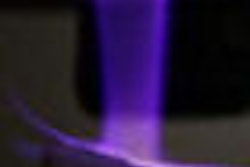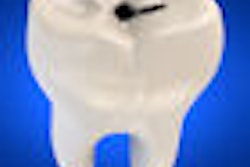University of Missouri engineers and their research collaborators at Nanova are one step closer to their goal of developing a plasma-based brush that they say will improve restoration lifetimes.
After favorable results in lab testing, the researchers are now gearing up to begin human clinical trials, according to a university press release.
In less than 30 seconds, the plasma brush uses chemical reactions to disinfect and clean out cavities for fillings, the developers explained. In addition to the bacteria-killing properties, the "cool flame" from the plasma brush forms a better bond for cavity fillings, they claim. The chemical reactions involved with the plasma brush change the surface of the tooth, which allows for a strong and robust bonding with the filling material.
"There have been no side effects reported during the lab trials, and we expect the human trials to help us improve the prototype," said Qingsong Yu, PhD, an associate professor of mechanical and aerospace engineering at the University of Missouri (MU), and Meng Chen, PhD, chief scientist from Nanova, which holds a patent for the plasma brush along with the university.
"Our studies indicate that fillings are 60% stronger with the plasma brush, which would increase the filling lifespan," said Hao Li, PhD, an associate professor of mechanical and aerospace engineering in the MU College of Engineering.
Human clinical trials are expected to begin in early 2012 at the University of Tennessee-Memphis. If the studies go well and the device gains regulatory approval, the researchers believe the brush could be available to dentists by the end of 2013.



















